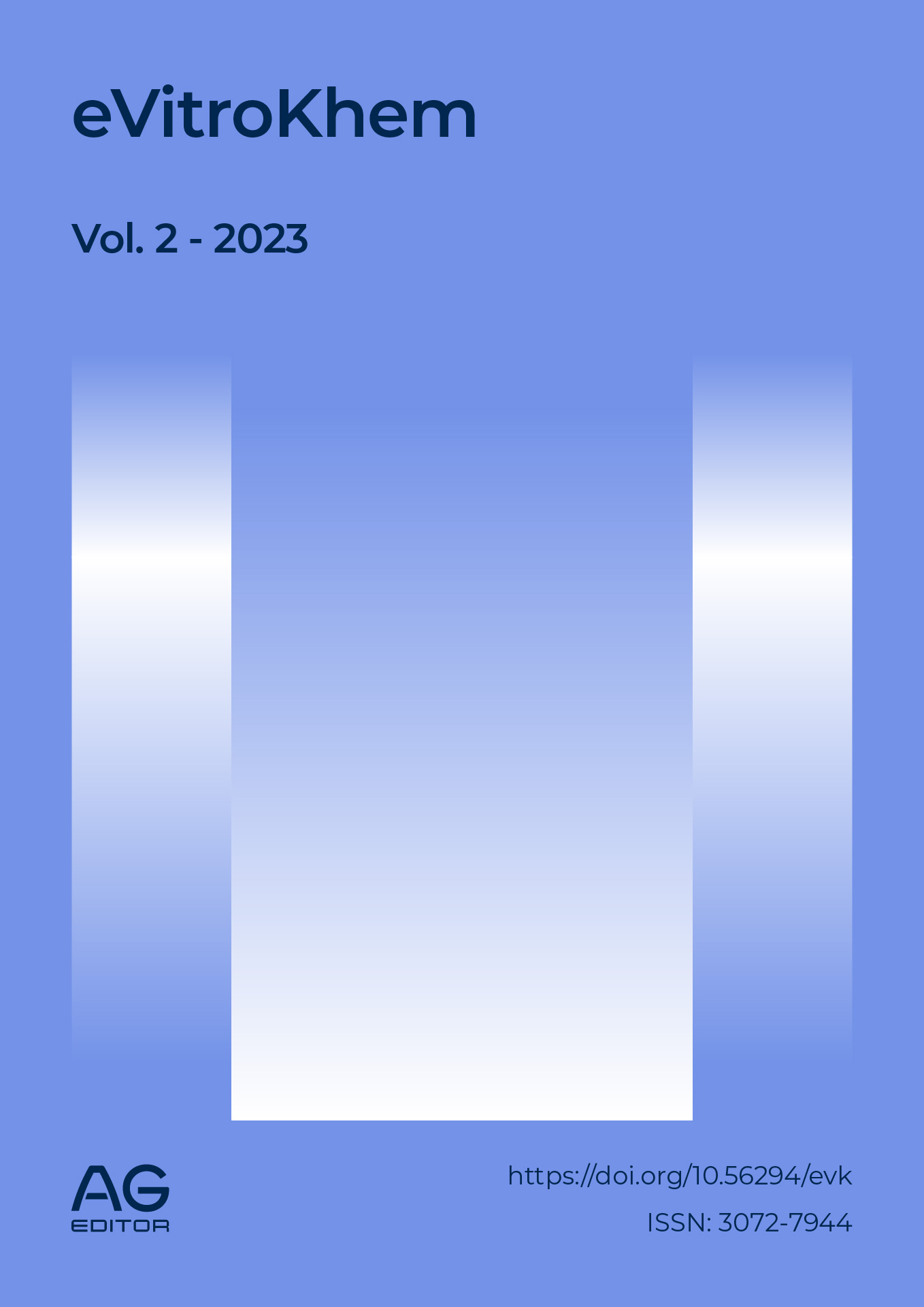Phytoremediation efficiency of Pistia stratiotes and Eichhornia crassipes in leachates generated at the Cuñumbuqui landfill
DOI:
https://doi.org/10.56294/evk202356Keywords:
Phytoremediation, Phytotechnology, Treatment, LeachatesAbstract
The present investigation entitled "Eficiencia de fitorremediación de Pistia stratiotes y Eichornia crassipes en lixiviados generados en el botadero de Cuñumbuqui, San Martín 2020." It has as a general objective is to evaluate the efficiency of the phytoremediation of the selected species that are the Pistia stratiotes and Eichornia crassipes, this research is of an applied type since in the treatment, phytoremediation techniques were applied using macrophyte species under ex situ conditions; with a quasi - experimental design; The population corresponded to the leachate generated in the Cuñumbuqui dump, from which a sample of 130L was obtained, where 20L was distributed for each of the 6 ponds that were used in the treatment, which was carried out in a period After 15 days, the field parameters (pH, temperature, EC and DO) were monitored every 3 days during that time; Likewise, techniques and instruments were used to collect data, respectively, such as: the field record sheet, daily record, and chains of custody; The procedure was developed in stages both in the office for the systematization of information and data, and in the field to carry out the project. In conclusion, the application of macrophyte species in leachates formed in landfills is a treatment alternative, it was found that Eichhornia crassipes is more efficient than Pistia stratiotes, since it has a greater removal of pollutants to improve the quality of these waters, which that would allow giving it a different final disposition.
References
Andina. Agencia Peruana de noticias. Editora Peruana; 2019 jun 7 [citado 2025 ago 14]. Disponible en: https://andina.pe/agencia/noticia-san-martin-inauguran-planta-valorizacion-residuos-solidos-tarapoto-754813.aspx
Becerra C. Inauguración de planta de valorización de residuos sólidos en Tarapoto. Andina. Lima: Agencia Peruana de noticias; 2019;1(1). [citado 2025 ago 14]. Disponible en: https://andina.pe/agencia/noticia-san-martin-inauguran-planta-valorizacion-residuos-solidos-tarapoto-754813.aspx
Chandra P, Vinuprakash K, Arun S. Treatment of domestic wastewater using Vermi-Biofiltration system with and without wetland plants. Int J Civil Eng Technol. 2018 abr;9(4). Disponible en: http://www.iaeme.com/MasterAdmin/uploadfolder/IJCIET_09_04_046/IJCIET_09_04_046.pdf
Delgadillo A, et al. Fitorremediación: una alternativa para eliminar la contaminación. Universidad Autónoma del Estado de Hidalgo. Rev Int Contam Ambient. 2011;14(2):12-4. Disponible en: http://www.scielo.org.mx/scielo.php?pid=S1870-04622011000200002&script=sci_arttext
Diez J. Fitocorrección de suelos contaminados con metales pesados: evaluación de plantas tolerantes y optimización del proceso mediante prácticas agronómicas [tesis doctoral]. Santiago de Compostela (ES): Universidad de Santiago de Compostela, Facultad de Biología; 2008. Disponible en: https://minerva.usc.es/xmlui/bitstream/handle/10347/2540/9788498872026_content.pdf?sequence=1&isAllowed=y
Environmental Protection Agency (EPA). Environmental Management Support, Inc.; 1999. Disponible en: https://clu-in.org/download/remed/phytoresgude.pdf
CRQ. Especie. En: Glosario de Términos Ambientales. Oficina de Comunicaciones. p.17. Disponible en: https://www.crq.gov.co/Documentos/GLOSARIO%20AMBIENTAL/GLOSARIO%20AMBIENTAL.pdf
Espinoza MC, et al. Análisis del comportamiento de los lixiviados generados en un vertedero de residuos sólidos municipales en La Habana. Rev Int Contam Ambient. 2010;26(4). Disponible en: http://www.scielo.org.mx/scielo.php?script=sci_arttext&pid=S0188-49992010000400006
Fasani E. Phytoremediatory efficiency of Chrysopogon zizanioides in the treatment of landfill leachate: a case study. Environ Sci Pollut Res. 2018;1(1). Disponible en: https://vetiver.org/ITA_Leachate%20Italian.pdf
Ghosh M, Singh SP. A review on phytoremediation of heavy metals and utilization of its by products. Asian Energy J. 2005;6(4). Disponible en: http://www.asian-energy-journal.info/Abstract/A%20review%20on%20phytoremediation%20of%20heavy%20metals%20and%20utilisation%20of%20it%20s%20by%20products.pdf.
Gómez H. La fiscalización ambiental en los residuos sólidos. OEFA. Ministerio del Ambiente. 2014;1(1):4-23. Disponible en: https://www.oefa.gob.pe/?wpfb_dl=6471
Hernández R, et al. Metodología de la investigación. 6ª ed. México: Interamericana Editores; 2014 [citado 2020 may 7]. ISBN: 9786071502919.
Jerez J. Remoción de metales pesados en lixiviados mediante fitorremediación [tesis de grado]. Costa Rica: Universidad de Costa Rica; 2013 [citado 2020 may]. Disponible en: http://www.ciencias.ucr.ac.cr/sites/default/files/Jos%C3%A9%20Jerez-2013-Remoci%C3%B3n%20de%20metales%20pesados%20en%20lixiviados%20mediante%20fitorremediaci%C3%B3n.pdf
Madera C, et al. Efecto de la concentración de metales pesados en la respuesta fisiológica y capacidad de acumulación de metales de tres especies vegetales tropicales empleadas en la fitorremediación de lixiviados. Ing Competitividad. 2014;16(2):179-88. Disponible en: http://www.scielo.org.co/pdf/inco/v16n2/v16n2a16.pdf DOI: https://doi.org/10.25100/iyc.v16i2.3693
Medina Y, et al. Optimización del proceso Fenton en el tratamiento de lixiviados de rellenos sanitarios. Rev Soc Quím Perú. 2016;82(4):454-66. Disponible en: http://www.scielo.org.pe/scielo.php?script=sci_arttext&pid=S1810-634X2016000400007
Méndez. Comparación de cuatro tratamientos fisicoquímicos de lixiviados. Rev Int Contam Ambient. 2009;25(3). Disponible en: http://www.scielo.org.mx/scielo.php?script=sci_arttext&pid=S0188-49992009000300002
Obeidat M. Impact of a domestic wastewater treatment plant on groundwater pollution, north Jordan. Rev Mex Cienc Geol. 2013;30(2). Disponible en: http://www.scielo.org.mx/pdf/rmcg/v30n2/v30n2a9.pdf
OEFA. Fiscalización ambiental en aguas residuales. Organismo de Evaluación y Fiscalización Ambiental; 2014. Disponible en: https://www.oefa.gob.pe/?wpfb_dl=6471
ONU. Medio Ambiente. Perspectiva de la gestión de residuos en América Latina y el Caribe. 1ª ed. Panamá: Shutterstock.com; 2018. Disponible en: https://wedocs.unep.org/bitstream/handle/20.500.11822/26448/Residuos_LAC_ES.pdf?sequence=1&isAllowed=y
Padmavathiamma P. Phytoremediation technology: hyper-accumulation metals in plants. Water Air Soil Pollut. 2007;1(1):12-6. doi:10.1007/s11270-007-9401-5. Disponible en: https://www.researchgate.net/publication/225710092_Phytoremediation_Technology_Hyper-Accumulation_Metals_in_Plants DOI: https://doi.org/10.1007/s11270-007-9401-5
Pellón A, López M, Espinosa M, González O. Propuesta para tratamiento de lixiviados en un vertedero de residuos sólidos urbanos. Rev Ing Hidrául Ambient. 2015;36(2):3-16. Disponible en: http://scielo.sld.cu/scielo.php?script=sci_arttext&pid=S1680-03382015000200001
Pinaffi JV, et al. Seasonal performance of aquatic macrophytes in improving physicochemical parameters of swine wastewater. Rev Bras Biol. 2019. Disponible en: https://www.scielo.br/scielo.php?script=sci_arttext&pid=S1519-69842019005020104&lang=es
Púa A, et al. Análisis de nutrientes de la raíz de la malanga en el trópico seco de Colombia. Rev Chil Nutr. 2019;30(4). Disponible en: https://scielo.conicyt.cl/scielo.php?script=sci_arttext&pid=S0718-07642019000400069 DOI: https://doi.org/10.4067/S0718-07642019000400069
Reichenauer T, Germida J. Phytoremediation of organic contaminants in soil and groundwater. PubMed. 2008;1(1):8-9. Disponible en: https://pubmed.ncbi.nlm.nih.gov/18698569/ DOI: https://doi.org/10.1002/cssc.200800125
Rezania S, et al. The efficient role of aquatic plant (water hyacinth) in treating domestic wastewater in continuous system. Int J Phytoremediation. 2016;18(7). Disponible en: https://www.researchgate.net/publication/287286161_The_Efficient_Role_of_Aquatic_Plant_Water_Hyacinth_in_Treating_Domestic_Wastewater_in_Continuous_System DOI: https://doi.org/10.1080/15226514.2015.1130018
Romero R. Evaluation of Cajanus cajan for phytoremediation of landfill leachate containing chromium and lead. Int J Phytoremediation. 2016 may;18. doi:10.1080/15226514.2016.1186592. Disponible en: https://www.tandfonline.com/doi/abs/10.1080/15226514.2016.1186592
Saenz J. Manejo de residuos sólidos en América Latina y el Caribe. Rev Omnia. 2014;20(3):123-5. Disponible en: https://www.redalyc.org/pdf/737/73737091009.pdf
Sari E. The effectiveness of filter media and echinoderms palaefoluis on phytoremediation of leachate. IOP Conf Ser Earth Environ Sci. 2018;175(1). Disponible en: https://iopscience.iop.org/article/10.1088/1755-1315/175/1/012096/pdf DOI: https://doi.org/10.1088/1755-1315/175/1/012096
Singh O, Jain RK. Phytoremediation of toxic aromatic pollutants from soil. Appl Microbiol Biotechnol. 2003;63(2):128-35. Disponible en: https://www.researchgate.net/profile/Om_Singh/publication/10607730_Phytoremediation_of_toxic_aromatic_pollutants_from_soil/links/0f317538a8a8b3c5b8000000.pdf DOI: https://doi.org/10.1007/s00253-003-1425-1
Tello P, et al. Informe de la evaluación regional del manejo de residuos sólidos urbanos en América Latina y el Caribe 2010 [tesis doctoral]. México: Inter-American Development Bank; 2010 [citado 2020 may]. Disponible en: https://publications.iadb.org/publications/spanish/document/Informe-de-la-evaluaci%C3%B3n-regional-del-manejo-de-residuos-s%C3%B3lidos-urbanos-en-Am%C3%A9rica-Latina-y-el-Caribe-2010.pdf
Torrez V, et al. Caracterización de lixiviados como alternativa que contribuya a la mitigación de contaminantes. Rev ION. 2018;31(1). Disponible en: http://www.scielo.org.co/pdf/rion/v31n1/0120-100X-rion-31-01-59.pdf DOI: https://doi.org/10.18273/revion.v31n1-2018010
Tuset S. Tratamiento de lixiviados de vertederos. Tratamiento de aguas residuales, efluentes y aire al servicio del medio ambiente. 2017;1(1). Disponible en: https://blog.condorchem.com/tratamiento-de-lixiviados-de-vertedero/
Valderrama C, et al. Optimización del proceso frentón en el tratamiento de lixiviados de rellenos sanitarios. Rev Soc Quím Perú. 2016;82(4):43-7. Disponible en: http://www.scielo.org.pe/scielo.php?script=sci_arttext&pid=S1810-634X2016000400007 DOI: https://doi.org/10.37761/rsqp.v82i4.135
Villemain C. Cómo la basura afecta el desarrollo de América Latina. Noticias ONU. 2018;1(1):1-5. Disponible en: https://news.un.org/es/story/2018/10/1443562
Yavus S. Phytoremediation of landfill leachate using Pennisetum clandestinum. Rev Environ Biol. 2005;26(1):13-20. Disponible en: https://www.researchgate.net/profile/Reyhan_Erdogan/publication/7647219_Phytoremediation_of_landfill_leachate_using_Pennisetum_clandestinum/links/54460df20cf22b3c14ddf99b/Phytoremediation-of-landfill-leachate-using-Pennisetum-clandestinum.pdf
Yusoff M. Leachate characterization and phytoremediation using water hyacinth in Pulau Burung, Malaysia. Bioremediat J. 2012;16. doi:10.1080/10889868.2011.628350. Disponible en: https://d1wqtxts1xzle7.cloudfront.net. DOI: https://doi.org/10.1080/10889868.2011.628350
Published
Issue
Section
License
Copyright (c) 2025 Libia Belén Arévalo-Saavedra, Carlos Mauricio Lozano-Carranza, Andi Lozano-Chung (Author)

This work is licensed under a Creative Commons Attribution 4.0 International License.
The article is distributed under the Creative Commons Attribution 4.0 License. Unless otherwise stated, associated published material is distributed under the same licence.






